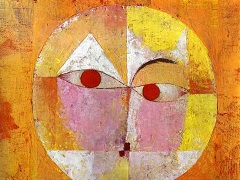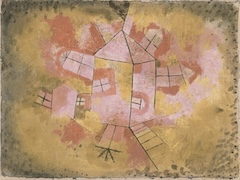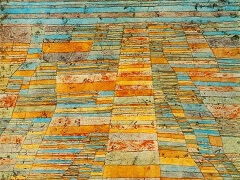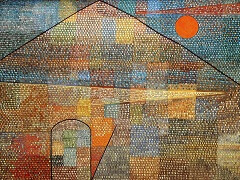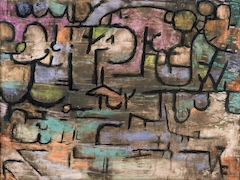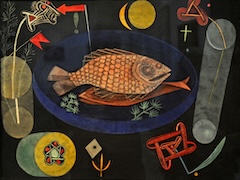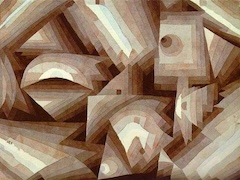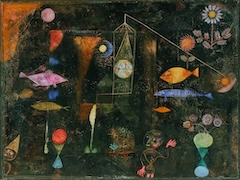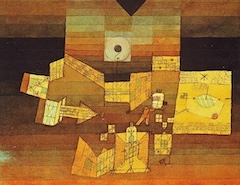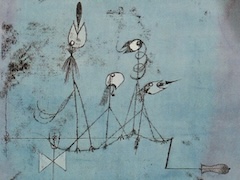Insula Dulcamara, 1938 by Paul Klee
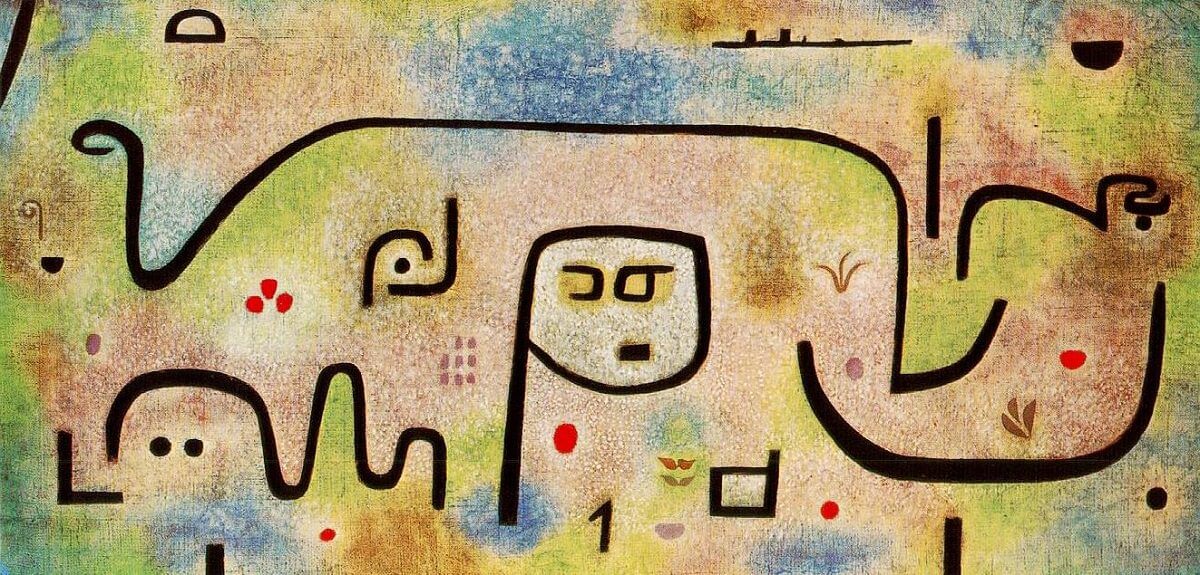
In 1938 Klee painted seven large panels in horizontal format. All of them are sketched with charcoal on newsprint, which Klee pasted over burlap or linen, thus obtaining a surface at once smooth and differentiated. The printed paper often shows through the color, and we read snatches of old asd and editorials. This did not trouble Klee in the slightest - he enjoyed such effects of mild surprise. More generally, he now makes greater use of unusual materials such as wrapping paper and burlap, paste colors, and plaster coatings. Similarly, from 1937 on, he employed bar strokes of varying thickness for his sign language.
Insula Dulcamara is cheerful work, with its sparse appurtenances on a dark ground. Klee rejected the suggestion that this picture be named "Calypso's Island" as too "direct," but his sketch fits that idea. The black contours are coastlines, the head is an idol, the other curved lineaments point to some tragic entanglement. On the horizon a steamer is sailing by; this does not affect the myth any more than the heavenly signs are contradictory - one of them stands for the rising, the other for the setting moon. The colors are springlike - a May green, a blossom pink, and a sky blue. This is spring on one of the Cylades, which Ulysses passed on his way to Ithaca. The Homeric Age has not yet ended, yet our own has long since begun, and the future with it. Transparency of time and Transparency of space, for where would the latter begin or stop, where would be the difference between the sea and the land? Klee has entered the multidimensional without being aware of it, though in his youth he thought of this state as his supreme goal.

